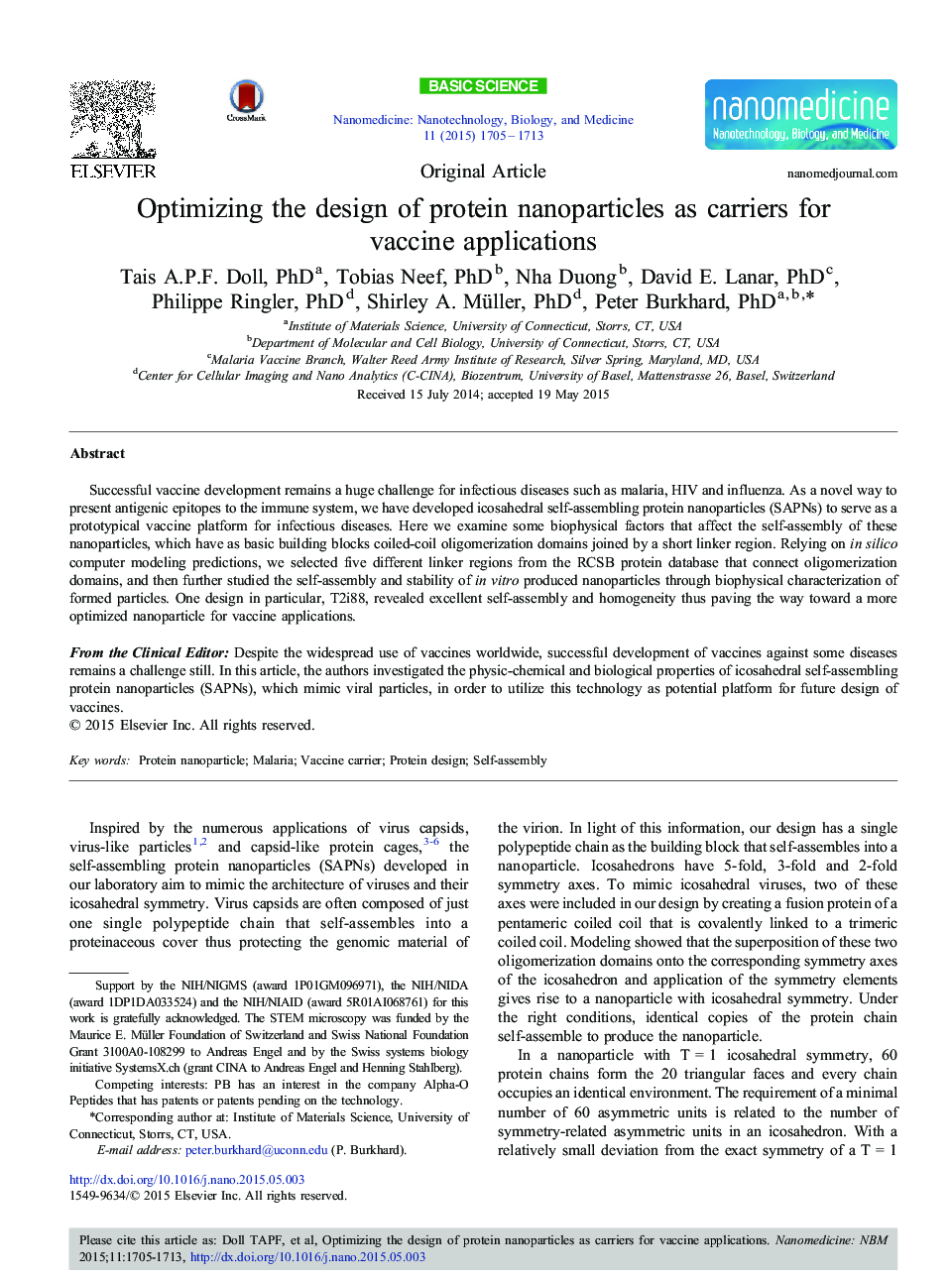| کد مقاله | کد نشریه | سال انتشار | مقاله انگلیسی | نسخه تمام متن |
|---|---|---|---|---|
| 877390 | 911024 | 2015 | 9 صفحه PDF | دانلود رایگان |
Successful vaccine development remains a huge challenge for infectious diseases such as malaria, HIV and influenza. As a novel way to present antigenic epitopes to the immune system, we have developed icosahedral self-assembling protein nanoparticles (SAPNs) to serve as a prototypical vaccine platform for infectious diseases. Here we examine some biophysical factors that affect the self-assembly of these nanoparticles, which have as basic building blocks coiled-coil oligomerization domains joined by a short linker region. Relying on in silico computer modeling predictions, we selected five different linker regions from the RCSB protein database that connect oligomerization domains, and then further studied the self-assembly and stability of in vitro produced nanoparticles through biophysical characterization of formed particles. One design in particular, T2i88, revealed excellent self-assembly and homogeneity thus paving the way toward a more optimized nanoparticle for vaccine applications.From the Clinical EditorDespite the widespread use of vaccines worldwide, successful development of vaccines against some diseases remains a challenge still. In this article, the authors investigated the physic-chemical and biological properties of icosahedral self-assembling protein nanoparticles (SAPNs), which mimic viral particles, in order to utilize this technology as potential platform for future design of vaccines.
Graphical AbstractUsing in silico computer modeling predictions, we selected five different linker regions from proteins in the RCSB protein database to connect the coiled-coil oligomerization domains in our nanoparticles, and studied the self-assembly and stability of in vitro produced nanoparticles through biophysical characterization. One design revealed excellent self-assembly and homogeneity thus paving the way toward a more optimized nanoparticle for vaccine applications.Figure optionsDownload high-quality image (333 K)Download as PowerPoint slide
Journal: Nanomedicine: Nanotechnology, Biology and Medicine - Volume 11, Issue 7, October 2015, Pages 1705–1713
